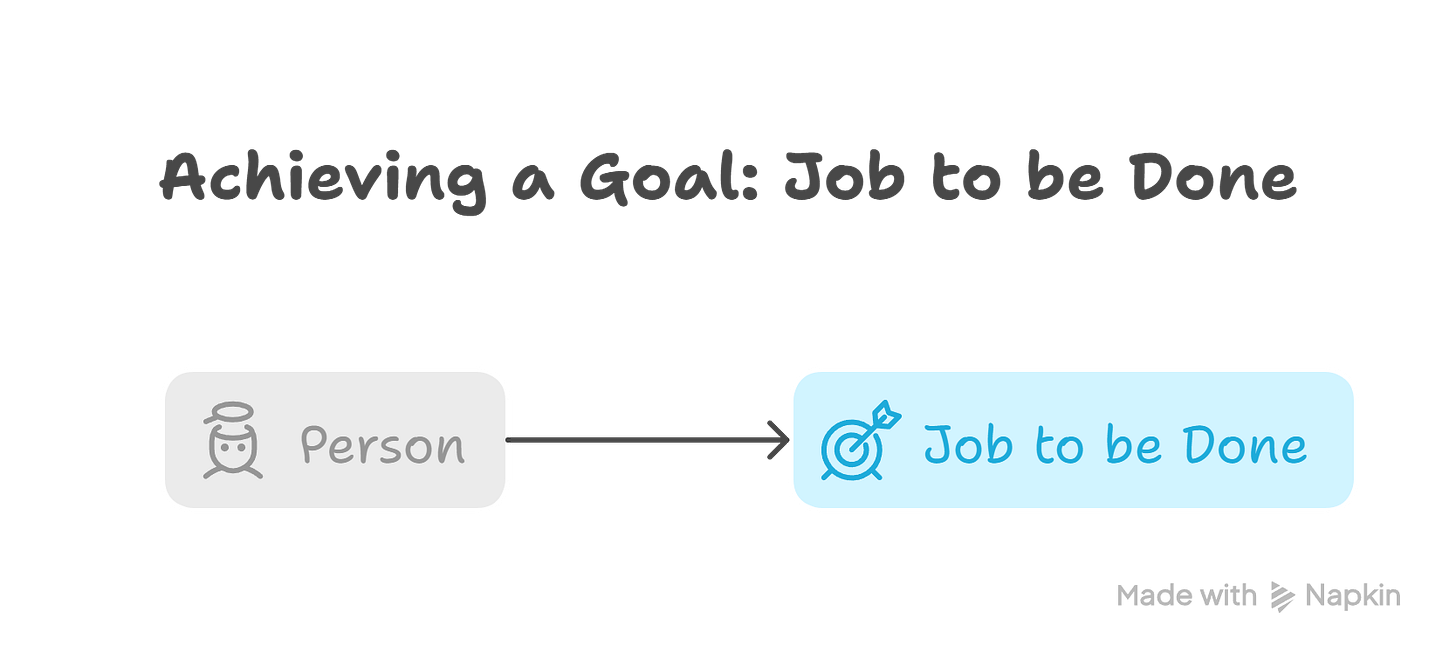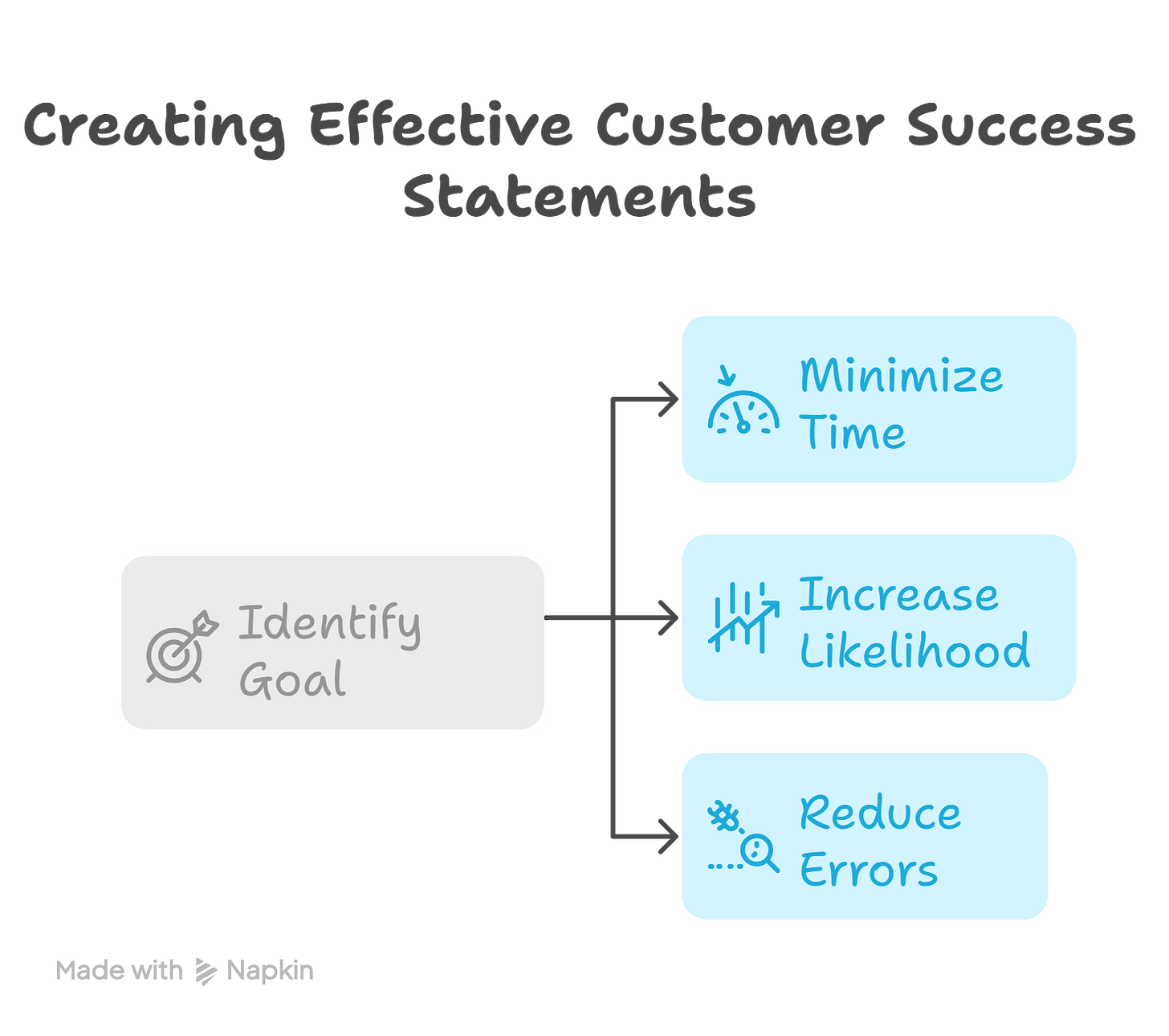We’ve all heard the grim statistics: the vast majority of new products fail. Companies pour billions into innovation, yet the results often feel frustratingly unpredictable, more like rolling the dice than executing a sound business strategy. Project post-mortems might blame execution, market timing, or lack of features, but often, the real culprit lies deeper – a fundamentally flawed approach to innovation itself.
The good news? This high failure rate isn't fate. It's often the result of operating without a coherent, customer-centric strategy. Many so-called "innovation processes" are merely collections of disconnected tactics – brainstorming sessions, hackathons, feature sprints – lacking a unifying logic that connects effort to real customer value and market success.
This post explores how to move beyond hope and guesswork. I'll outline how a strategy built on the principles of Jobs-to-be-Done (JTBD) provides the necessary structure for predictable, impactful innovation. I'll cover:
Why typical approaches fall short of predictability.
What makes a JTBD approach truly strategic.
The core pillars of a JTBD strategy that works.
Actionable steps to start building yours.
Let's stop gambling on growth and start engineering it.
Part 1: Why Predictability Remains Elusive - Common Strategic Gaps
Before building a better strategy, we need to understand why current methods often fail to deliver consistent results. Predictability breaks down when these strategic gaps exist:
Gap 1: Lack of Customer-Centricity (The Right Kind)
Many companies talk about customer-centricity, but they focus on who the customer is (demographics, personas) rather than what the customer is trying to achieve. True customer-centricity means understanding the underlying "Job" the customer is trying to get done – the progress they are trying to make in a specific circumstance. Without this focus, you're solving for the wrong variables.
Gap 2: Idea-Led Instead of Need-Led
The "cool idea" or the exciting new technology often takes center stage. Teams fall in love with a solution and then try to find a problem it can solve. This inside-out approach is inherently risky. Predictable innovation starts from the outside-in: identifying significant, unmet customer needs first, then developing solutions to address them.
Gap 3: Missing Metrics That Matter
Are you measuring innovation activity or innovation impact? Tracking the number of ideas generated, patents filed, or projects launched tells you nothing about whether you're creating value customers will pay for. A working strategy relies on metrics tied directly to customer progress – primarily, how well their desired outcomes in getting the Job done are being satisfied.
Gap 4: Misaligned Execution
Even with good intentions, if Product, R&D, Marketing, and Sales aren't operating from the same playbook regarding the customer's Job and desired outcomes, efforts become fragmented. Marketing might emphasize features Product didn't prioritize, or Sales might target customers whose core Job you don't actually serve well. This lack of strategic alignment breeds inefficiency and unpredictable results.
Part 2: What is a JTBD Strategy? Beyond Tactics
So, how does JTBD provide a solution? It's crucial to understand that implementing JTBD isn't just about using specific tools like customer interviews or job maps (though those can be helpful). It’s about adopting a strategic framework.
A JTBD strategy is a company's integrated approach to identifying, prioritizing, and systematically addressing customers' unmet desired outcomes within a specific Job-to-be-Done.
Think of it this way:
Tactics are individual actions (e.g., conducting a JTBD interview, brainstorming features).
Strategy is the overarching logic that guides which actions to take, why, and how they connect to achieve a specific goal – in this case, predictably creating solutions customers will hire.
A JTBD strategy embeds the core logic – focus on the Job, define success through customer outcomes, find unmet needs – into the fundamental decision-making processes of the business. It shifts the goal from "launching new things" to "systematically creating customer value," making innovation a predictable engine for growth, not a series of one-off bets.
Part 3: The Pillars of a Working JTBD Strategy
A robust JTBD strategy stands on four essential pillars:
Pillar 1: Deep Job Understanding
Everything starts here. You must clearly define the core functional Job(s) your target customers are trying to get done. This isn't about your product; it's about the customer's objective. What fundamental progress are they trying to make? Defining this accurately sets the context for everything else.
Pillar 2: Rigorous Outcome Discovery
Once the Job is defined, you need to uncover the customer's metrics for success. These are their Desired Outcomes – measurable, solution-agnostic statements describing how they define successful execution of the Job. Methodologies derived from Outcome-Driven Innovation (ODI) provide a structured process for capturing the complete set of these outcomes (often 50-150). Examples might include "Minimize the time it takes to..." or "Minimize the likelihood of/that..." getting a step in the job done successfully.
Pillar 3: Quantified Opportunity Identification
Knowing the outcomes isn't enough. You need to know where to focus. This pillar involves quantitatively surveying customers to determine the importance they place on each outcome and their current level of satisfaction with existing solutions (including yours and competitors'). The outcomes that are highly important but poorly satisfied represent the most significant, predictable opportunities for innovation and growth.
Pillar 4: Outcome-Driven Value Creation & Go-to-Market
The insights from the first three pillars must drive action. This means:
Guiding R&D and Product Development: Prioritize features and development efforts that directly address the most underserved desired outcomes.
Informing Marketing & Sales: Craft messaging that highlights how your solution helps customers achieve their high-priority, unmet outcomes better than alternatives. Align sales conversations around proving value against those specific customer metrics.
When these four pillars are in place and working together, you have a strategic framework that connects deep customer understanding directly to market execution.
Part 4: How to Start Building Your JTBD Strategy
Shifting to a JTBD strategy is a journey, not an overnight switch. Here are practical steps to begin:
Step 1: Define Your Market Around the Job, Not Just Demographics
Start thinking about your addressable market not just as an industry category or a set of personas, but as "the group of customers trying to get this specific Job done." This reframes who your competition is and where value can be created.
Step 2: Commit to Uncovering Desired Outcomes
This is the most critical, foundational step. Invest the time and resources needed for rigorous qualitative research (to discover the outcomes) and quantitative research (to prioritize them). Skipping or short-changing this step undermines the entire strategy. It's the bedrock of predictability.
Step 3: Analyze Your Current Portfolio Through an Outcome Lens
Evaluate your existing products and services. Which specific desired outcomes do they address well? Which do they neglect? Where do competitors outperform you on key outcomes? This analysis reveals immediate threats and opportunities.
Step 4: Prioritize & Align Resources Based on Opportunity
Use the quantitative outcome data (importance vs. satisfaction vs. effort vs. complexity vs. context) to make deliberate strategic choices. Where will you invest your R&D budget? Which features move the needle on critical unmet needs? How will marketing communicate this focused value? Make the opportunities visible and actionable as your guide for resource allocation.
Step 5: Communicate & Iterate
Embed the language of the Job and desired outcomes into your internal conversations, planning processes, and reporting. Make it the shared language of value creation. Regularly monitor outcome satisfaction levels to track progress and identify emerging gaps.
Conclusion: Trading Hope for Predictability
Innovation doesn't have to be a gamble. By shifting from an idea-centric or product-centric approach to a strategy fundamentally grounded in the customer's Job-to-be-Done and their desired outcomes, you can move towards a more predictable, effective innovation engine.
A well-implemented JTBD strategy provides:
Higher Innovation Success Rates: By targeting validated, unmet needs.
Stronger Competitive Advantage: By creating value competitors haven't recognized.
Better Resource Allocation: By focusing investment where it matters most to customers.
Increased Organizational Alignment: By uniting teams around a clear, shared understanding of customer value.
It requires discipline, investment in understanding the customer deeply, and a willingness to challenge assumptions. But the payoff is moving from simply hoping for growth to strategically engineering it.
What do you think? What's the biggest hurdle you face in making innovation more strategic in your organization? Share your thoughts in the comments below!
P.S. For a visual overview of shifting to a JTBD mindset for strategy, check out my companion video.
If you’d like to take action, I would love to help. Here’s are some steps you can take to make that a reality for us:
Join my community and get access to more content and tools
Apply for coaching so we can do projects together and build a new business-as-usual with someone who will share the knowledge, and hold you accountable. (I have limited seats so hurry!)
I do project work as well. Use the coaching link and we can discuss.
Why Me?
I’ve been trained by the best in Outcome-Driven Innovation. Part of that training involved how to understand what the future should look like. As a result, I’ve taken what I’ve learned and begun innovating so I can get you to the outcomes you’re seeking faster, better, and even more predictably. Anyone preaching innovation should be doing the same; regardless of how disruptive it’ll be.
How am I doing this?
I’ve developed a complete toolset that accelerates qualitative research to mere hours instead of weeks or months it used to take. It’s been fine-tuned over the past 2+ years and it’s second-to-none (including to humans). That means we can have far more certainty that we’ve properly framed your research before you invest in a basket of road apples. They don’t taste good, even with whipped cream on top.
I’m also working on a completely new concept for prioritizing market dynamics that predict customer needs (and success) without requiring time-consuming and costly surveys with low quality participants. This is far more powerful and cost effective than point-in-time surveys that I know you don’t want to do!
I believe that an innovation consultant should eat their own dog food. Therefore, we must always strive to:
Get more of the job done for our clients
Get the job done better for our clients
Get the job done faster for our clients
Get the job done with with fewer features for our clients
Get the job done in a completely different and novel way for our clients
Get the job done in a less costly manner for our clients
You could be an early tester of the latest developments, but at a minimum take advantage of an approach that is light years ahead of incumbent firms that are still pitching a 30 year old growth strategy process but haven’t grown themselves. 👈🏻Check it out!
All the links you need are a few paragraphs up. Or set up some time to talk … that link is down below. 👇🏻
Mike Boysen - www.pjtbd.com
Why fail fast when you can succeed the first time?
📆 Book an appointment: https://pjtbd.com/book-mike


















Share this post